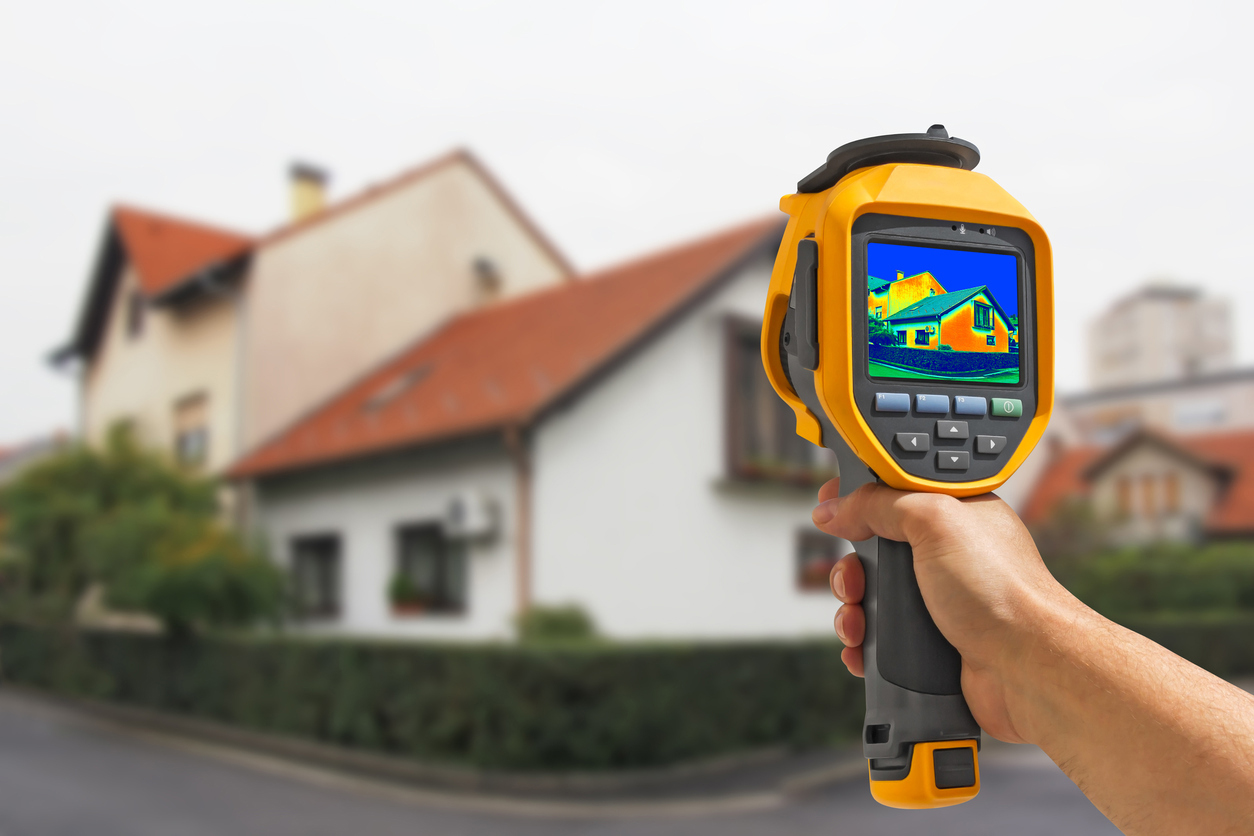
Despite the high energy efficiency rating of individual materials, building envelopes may not perform at their peaks. Building envelopes that perform poorly reduce energy efficiency, increase ROI times, and increase carbon footprints and utility bills for building owners. A blower door test can help to establish the air-tightness of small to medium buildings, measure the flow of air between different areas in a building and test the air-tightness of ductwork.
The reasons for why building envelopes perform below their peaks are legion. Everything from construction flaws to improperly sized HVAC systems can be to blame. One of the main reasons is leaks that occur where wall sheathing panels connect. Using taller wall panels like TallWall and WindStorm help to reduce wall air filtration by up to 60%.
Blower door tests measure the efficacy of the building envelope during the construction process to identify gaps and flaws that can be corrected prior to completion.
Conducting a blower door test will show whether the building envelope meets its insulation targets and needs to be documented in order for a building to qualify for energy efficiency programs such as LEED, Passivhaus and Energy Star.
How they work
During a blower door test, a large fan in an expandable frame is sealed into a door jamb. The fan exhausts air from the building until internal pressure measures 50 pascals. Depressurizing the home makes it easier to locate leaks and indicates the rate at which air seeps from the building.
Experts are then able to measure airflow at a pressure difference of 50 Pascals (cfm50) or air changes per hour at a pressure difference of 50 Pascals (ach50). Smoke sticks are utilized to show where there are leaks in the building envelope.
http://www.youtube.com/watch?v=r0Vw1Mqu5hE
Reading the Results
The first number of the blower door test (cfm50) can be read off the manometer when the test is conducted while the second number (ach50) can be calculated once the volume of the building (including the basement) in cubic feet has been established. Then multiply the cfm50 reading by 60 (minutes per hour) and divide by the building’s volume.
David Keefe, from Vermont Energy Investment Corporation, gives the rule of thumb for understanding the results of your calculations: “Houses with less than 5 or 6 ach50 are considered tight, and those over 20 are quite leaky, though these numbers can be misleading without considering other variables such as climate, house size, and old versus new construction.”
A blower door test should be conducted prior to the installation of internal wall covering to expedite the correction of gaps in the building envelope. Some builder do two or three tests at different stages of construction so that they can catch leaks. Blower doors can be calibrated or uncalibrated, but it is best to use one that is calibrated as uncalibrated ones are only good for locating gaps in the building envelopes with smoke sticks. Calibrated blower doors allow you to accurately determine the efficiency of your building envelope and the rate of leakage. Blower door tests can also be conducted on existing structures to expose leaks and help with planning of retrofits.
